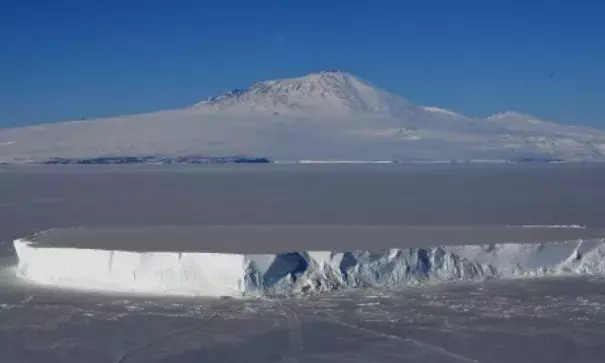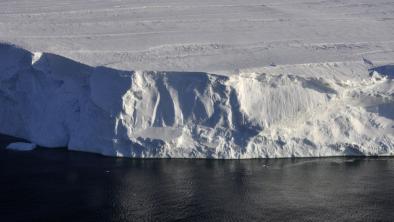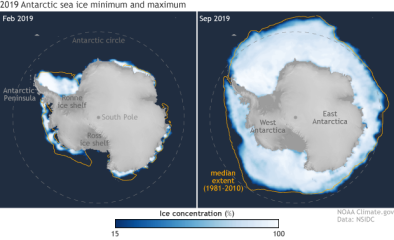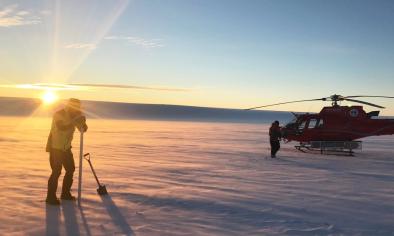Headline
Scientists stunned by Antarctic rainfall and a melt area bigger than Texas
West Antarctica

An iceberg lies in the Ross Sea with Mount Erebus in the background near McMurdo Station in Antarctica, November 11, 2016. A sheet of meltwater lasted for as long as 15 days in some places on the surface of the Ross Ice Shelf, the largest floating ice platform on Earth, during the Antarctic summer of 2016. Photo: Agence France-Presse via Getty Images
Scientists have documented a recent, massive melt event on the surface of highly vulnerable West Antarctica that, they fear, could be a harbinger of future events as the planet continues to warm.
In the Antarctic summer of 2016, the surface of the Ross Ice Shelf, the largest floating ice platform on Earth, developed a sheet of meltwater that lasted for as long as 15 days in some places. The total area affected by melt was 300,000 square miles, or larger than the state of Texas, the scientists report.
That’s bad news because surface melting could work hand in hand with an already documented trend of ocean-driven melting to compromise West Antarctica, which contains over 10 feet of potential sea level rise.
Related Content
Headline

Jan 29, 2020 | BBC News
Journey to the 'doomsday glacier'
Headline

Nov 22, 2019 | NOAA Climate.gov
Understanding climate: Antarctic sea ice extent
Headline

Mar 26, 2019 | The Guardian
Australian researchers find huge lakes beneath largest east Antarctic glacier
Science Source
| Geophysical Research Letters
Mass Loss of Totten and Moscow University Glaciers, East Antarctica, Using Regionally Optimized GRACE Mascons
Yara Mohajerani, Isabella Velicogna, Eric Rignot


